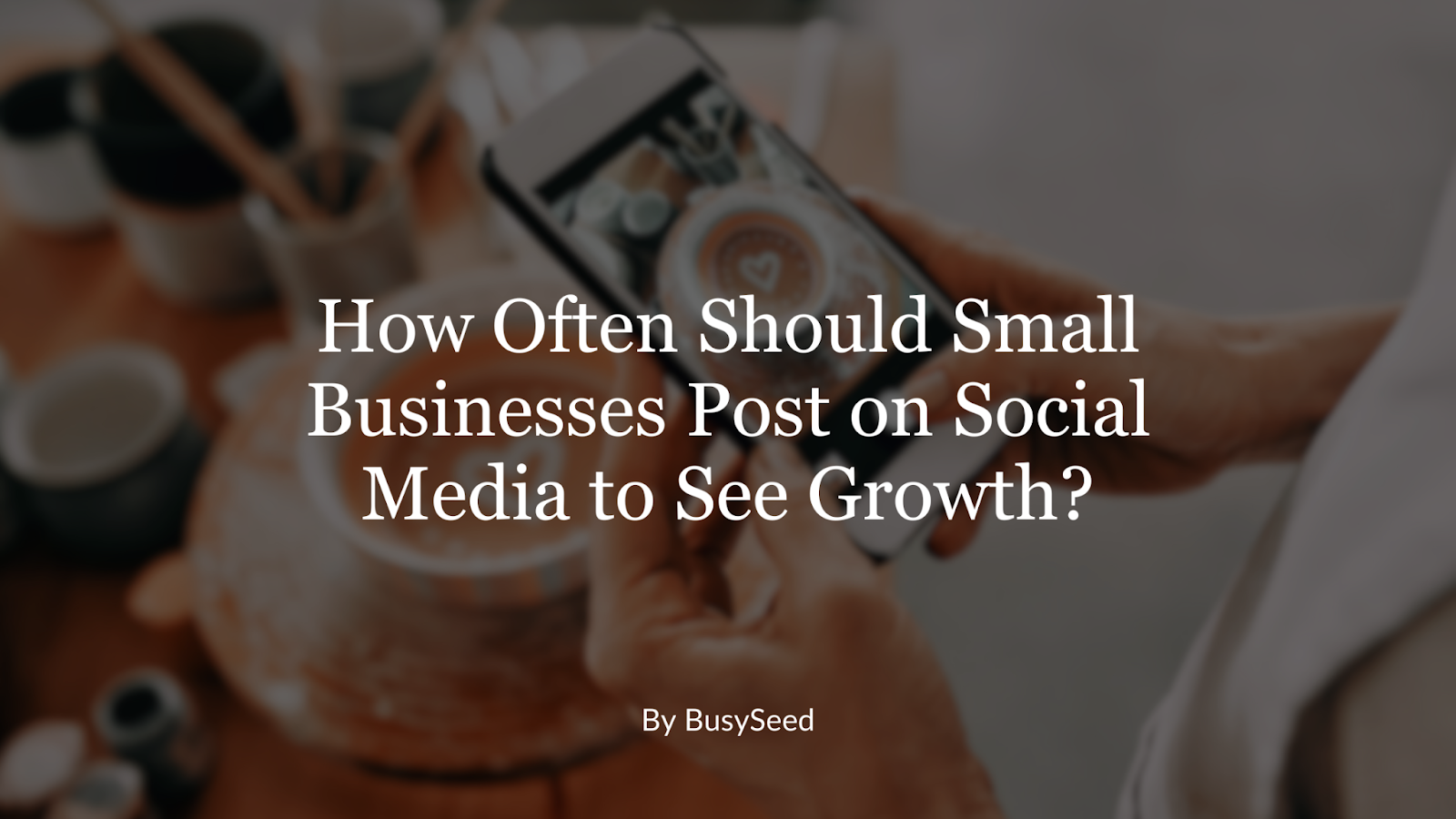Step-By-Step Guide to Social Media Marketing for Financial Services
If you work in financial services, social media marketing should be a critical strategy in your marketing plan.
If it’s not, or if you don’t know why it should be, keep reading.
Perception holds that social media marketing should be less relevant in the financial sector, and when you consider regulations, it is arguably the case. However, when you look at the base of any marketing strategy, the number one rule is: that people buy from companies they know, like and trust.
We know from experience, that social media marketing is the quickest way to develop each of these, while at the same time allowing you to better serve your existing customer base.
As a digital marketing agency specializing in financial services, BusySeed needs to stay updated with the latest rules and how to apply them to social media. So, here’s how to be great at social media for the financial services industry.

STEP ONE: DEVELOP YOUR CLIENT PERSONAS
The first step in any plan is to get to know your perfect customer(s). This is a method of developing a profile of your ideal customer. Once you know to whom you are selling, you are better able to develop the resources that will keep them coming back.
Keep in mind, that traditional profiles aren’t going to be enough this time. You need to also consider the newer generations of investors as well. This means understanding how they consume data, and what their ideals are. Again, understand to whom you are selling, and you are well on your way to an effective social media marketing strategy.
Now that you have your audience, it’s time to consider regulatory restrictions in social media marketing.
STEP 2: CONSIDER REGULATIONS
This step is vital in reviewing earlier, rather than later. Since there are stringent regulations surrounding sales in the financial services industry, you need to ensure any material is aligned with those regulations.
Some easy ways to incorporate this into your financial services company include:
- Education: Ensure all levels of stakeholders in the company are educated about what is and is not permitted in a sales ad. However, it may be better to keep your social media marketing posts limited to one or two individuals that are educated in the regulatory requirements of social media marketing and can monitor at “the gate.”
- Keeping Leads Organic: When we talk about nurturing leads, you want to make sure they are organic leads, meaning, they are asked to be contacted. Aside from the regulatory implications, social media platforms are enforcing their own stringent standards against certain spamming methods.
Now that you’ve considered the regulatory implications, it’s time to choose your tool or social media marketing. This will vary depending on the profiles you set up in step one.
STEP 3: CHOOSE YOUR TOOLS
Before you choose a tool, consider first where your customer would interact. Based on their age and gender profiles, the tool you choose to market to them will differ.
Facebook:
Facebook (FB) is a powerful platform to leverage for financial marketing on social media. It even has a “look-like” feature that allows you to segment your FB target audience, based on what your client profiles of the ideal customer look like.
LinkedIn:
While FB has many loyal followers, LinkedIn remains the top choice for much of the financial service social media marketing we see today. Thought leadership pieces are perfect within this forum.
YouTube:
YouTube is effective for creating a playlist of personal finance content you think would appeal to your customer base, and using this to develop a loyal following. About three-quarters of the Fortune 500 companies hold active accounts on this platform.
Snapchat:
Snapchat is relatively new to many in the financial services industry, and due to its target audience, it tends to be an underused platform for lead generation.
Twitter:
Twitter, on the other hand, is very popular with financial services companies. This forum is effective for monitoring industry activity and spreading the word about educational content. Follow FED announcements to keep up to date on regulatory changes.
Instagram:
With Instagram, you can also manage your FB advertising in tandem, and it is an effective way to reach those clients who rely on visual sales, such as Millenials. It is also effective for storytelling, which helps foster the trust factor in the customer buying cycle. Once you’ve decided on a marketing mix, it’s time to add value.
STEP 4: ADD VALUE
Value is added through content, which can be curated in one of two ways: in-house, or via a third party.
- In-house: The in-house curation method involves educating your audience on what you know. This is one of the easiest ways to curate content because it uses the expertise you already have. This method also serves to give your audience a “peek under the hood” about your company, which can foster the trust part of the customer buying cycle. Thought pieces, pro-tips, and company profile pieces are perfect ways to curate in-house content.
- Third-party: This method relies on other expertise in the field. The key here is to collaborate with similar companies aligned with yours, that are also offering educational resources. Referral links within the blogs on your company’s sites are a good way to accomplish this method of third-party content curation.
Whichever method is used, you need to use this step to allow your current and potential customers an opportunity to get to see your expertise firsthand. Do this, and you will remain a valuable resource.
STEP 5: ANALYZE & AMEND
The last, but no less important step in any social media marketing campaign, including those in the financial industry, is analyzing the results of a campaign.
Analysis: Analyzing the effect of the campaign is all about acknowledging what worked and what didn’t. By considering campaign result analytics and comparing against initially set goals, you can get a clearer picture of how to move forward in the future.
Amendments
Analyzing includes considering both the good and the bad. And since social media gives your financial service organizations a chance to show your real side, dealing with any bad press as it happens is a crucial part of this persona.
It is a good idea to address customer complaints on social media forums quickly and effectively. And since it is the financial services industry, you would benefit from the advice of a lawyer first, addressing client queries or complaints online.
CONCLUSION:
No matter the size of your financial organization, a social media strategy is the best way to quickly develop know, like, and trust factors.
At BusySeed, we know you have a lot on your plate, and effectively monitoring a social media marketing strategy may not be your top priority. This is where we come in.
Let us manage your social media marketing, so you can handle your business – we will take the stress away and deliver top results. We are a top-tier US-digital marketing agency, backed by over 70 years of combined experience, ready to use our expertise for your financial services company.
Contact us today and
let’s see what we can create for you.



 Forms? Rethinking Your B2B Lead Capture in a Post-Form World"." onerror="handleImageLoadError(this)"/>
Forms? Rethinking Your B2B Lead Capture in a Post-Form World"." onerror="handleImageLoadError(this)"/>






